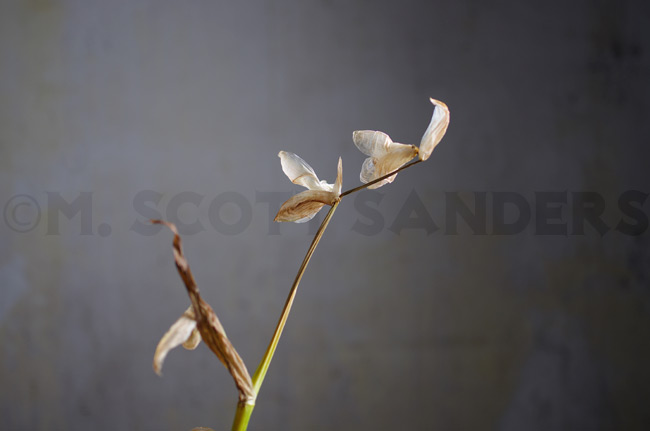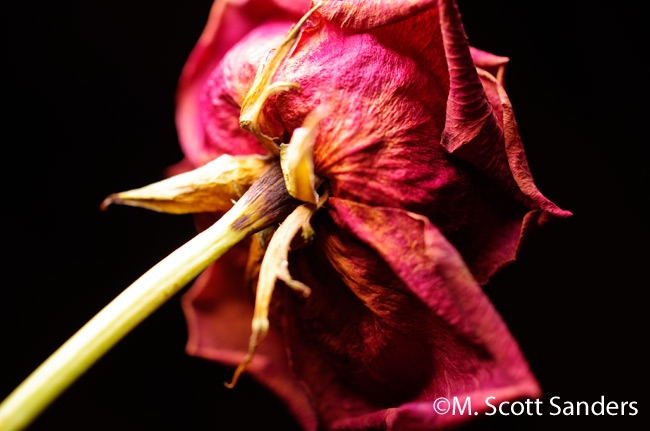It’s an odd feeling, getting flowers for the strict purpose of watching them decay, but by now, having watched a rose and an iris bite the dust, I was really getting into this new project. I walked in to the florist, feeling vaguely like a predator on the prowl, and carefully selected the new subjects.
What I chose was a group of hydrangeas, for a number of different reasons. For starters, I had never seen a dead hydrangea. They most often live in people’s gardens and spring back up each year. Also, there are so many groupings of small flowers, I wondered what would happen to them. Would they just wilt? Drop off?
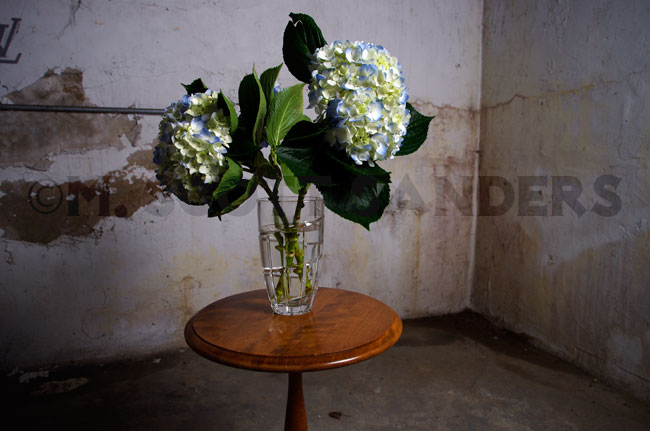
I set up in the dungeon room in the basement on day 1 and took some shots. I was still getting used to my new Elinchrom flash heads and it went well over all, but these hydrangeas were so puffy and full it was hard to get all three in the same shot.
I tried again on Day 3. One of the hydrangeas had already started going downhill a bit, and I got my first glimpse of the inner workings of the flower. All of these wonderful purple veins began to appear, now visibly holding the blue and white blossoms. I had no concept of the intricate system that was created to give these flowers their shape, and now it was opening up to show me.
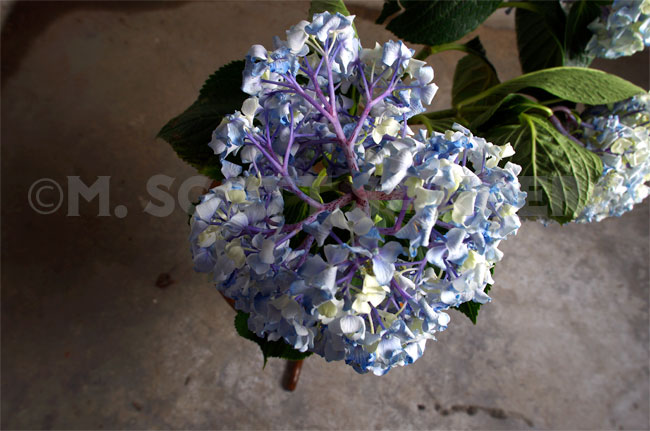
I realized it was a futile effort to try and get all three flowers in the same shot, so I transferred the individual flowers to their own vases. This is when things started to get really interesting. As the flowers drooped and the hairlines of each began to recede, they took on some strange, human quality.
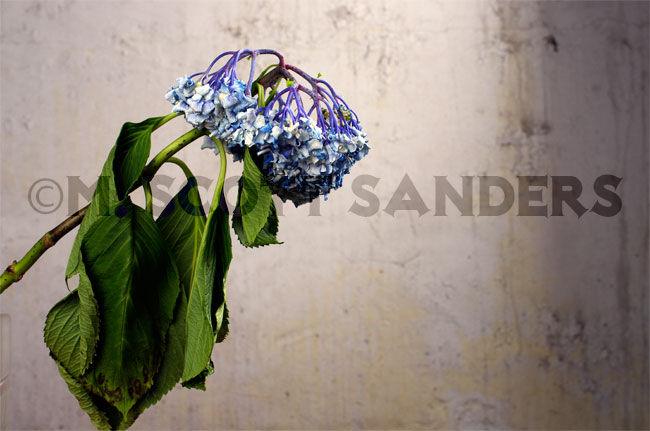
One of the three in particular became a terrific subject for a portrait. I shot this one with the same care as you would shoot a person.
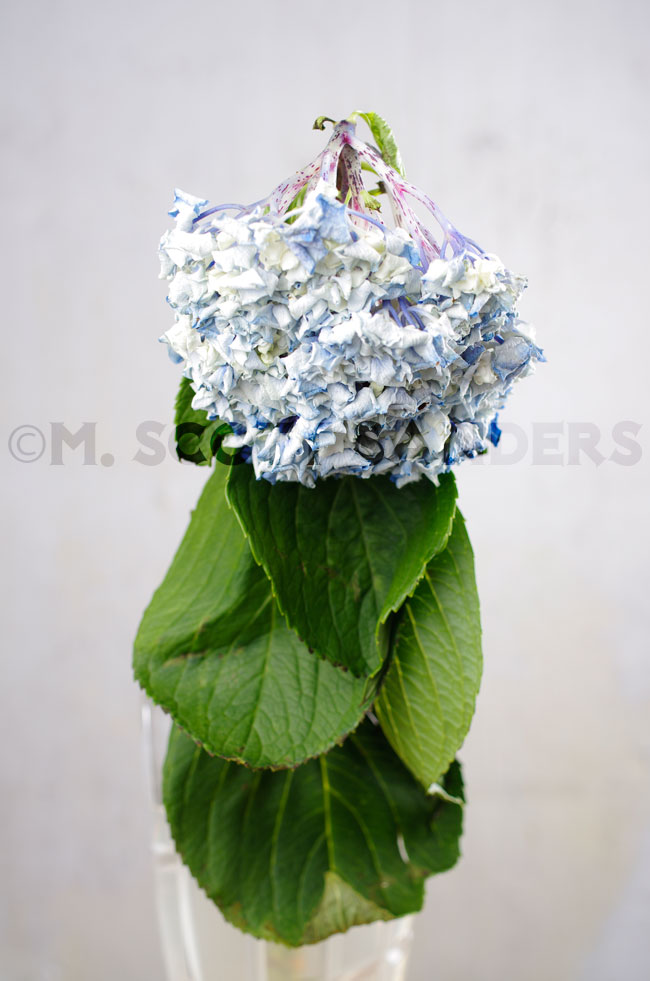
I realized later how great these flowers were for this project, because they didn’t just wilt and die, they transformed into something different. These hydrangeas became something new.
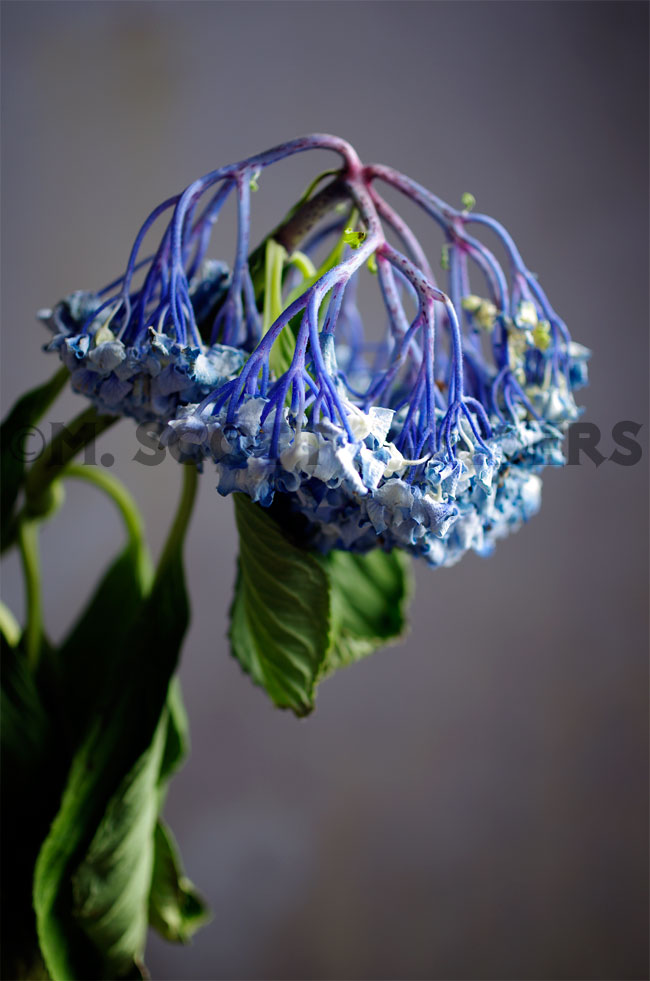 Already after a week, even in water, all three of the hydrangeas started to get decidedly crunchy. The leaves curled inward and were showing off their veins, just adding to the interest.
Already after a week, even in water, all three of the hydrangeas started to get decidedly crunchy. The leaves curled inward and were showing off their veins, just adding to the interest.
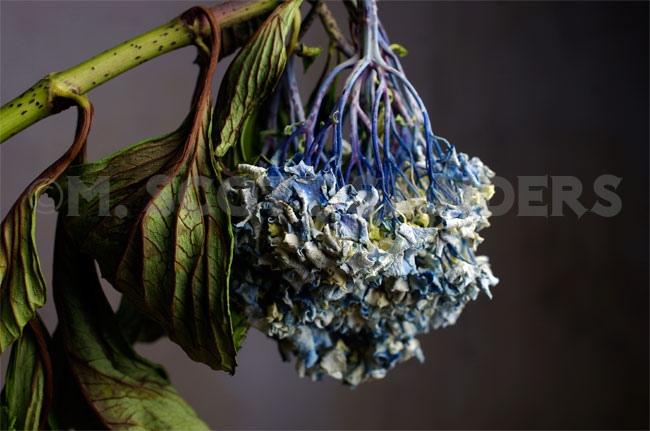
By now I had moved on to a set of Gerber Daisies, but I still kept the Hydrangeas around for test shots. One of my favorites of this latter group of shots I took was from a completely different angle. Somehow, and I don’t know if this just developed over time or whether it was like this to begin with, the stem of one of the flowers had magnificent curves to it, so I grabbed a few shots from up top to accentuate this effect.
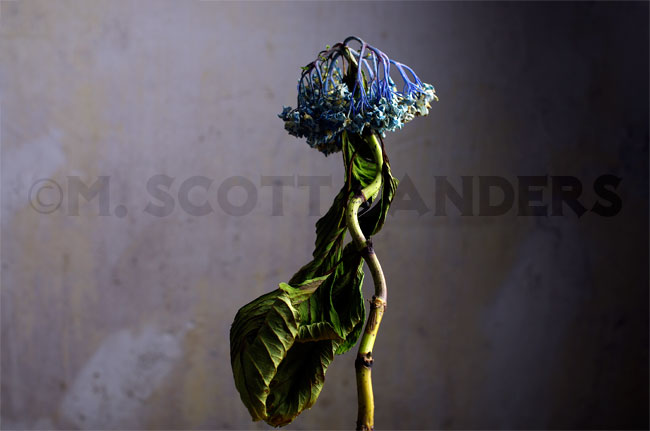
The point of this project was never clearly defined to me until these particular flowers. Decay can be beautiful and that in part is what I set out to document, but that’s not where it begins or ends. A picture of a person on day 1 and a picture on day 17,000 can both be beautiful, and in completely different ways. We all recognize the beauty of a flower in its fullness, but once it goes past it’s prime, it gets tossed in the trash. But there’s something in every stage of life that is interesting, vital, and fascinating.
Here are the first few in the Death of a Flower series, the rose and the iris. Over the next few months I’ll be adding more to this series, including the Gerber Daisies, a couple of Proteas, Sunflowers, Ragusa Mums and Lilies.


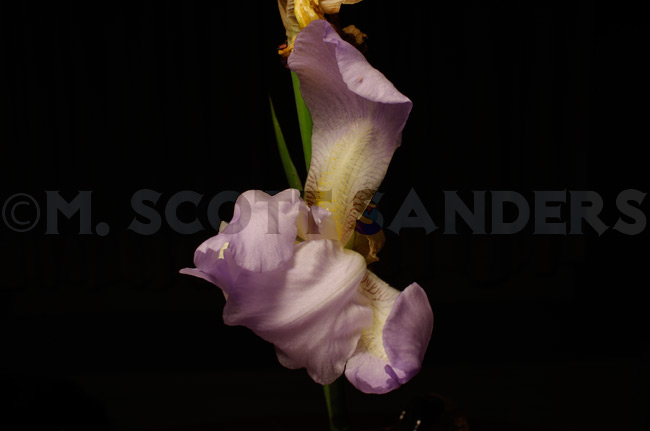
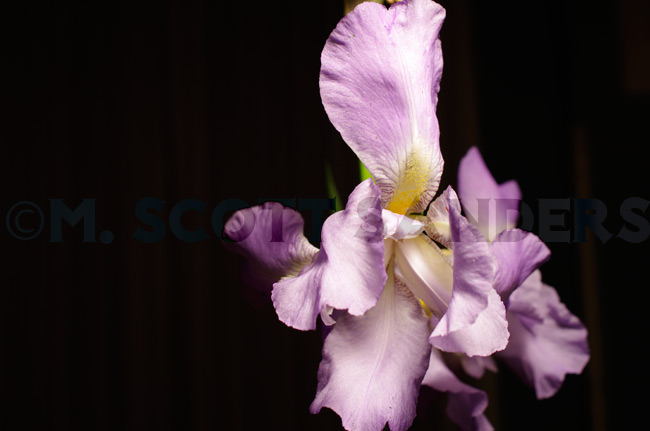
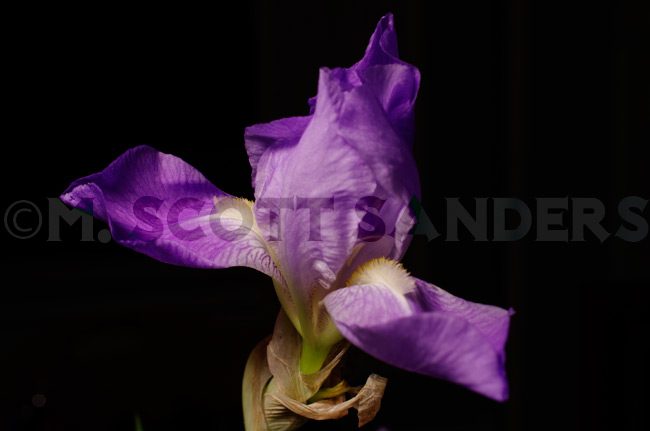 The results varied, but I found if I used my remote shutter and kept the camera on a tripod, I could manipulate the light to suit my purpose.
The results varied, but I found if I used my remote shutter and kept the camera on a tripod, I could manipulate the light to suit my purpose. The above shot was on Day 5. This was probably my favorite of all the Iris shots I made using this method.
The above shot was on Day 5. This was probably my favorite of all the Iris shots I made using this method.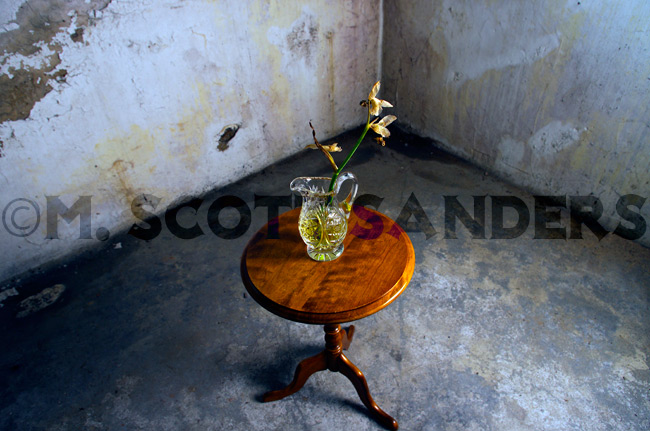 I kept the iris around far longer than I should have, until it got all wispy and fragile. I used it for test shots for a while before I got to my next subject, the hydrangeas. I continued to shoot in that odd basement room—and still do—with several other subjects, which I’ll share in the coming weeks. But here’s a test shot, taken about a month after I grabbed this one out of the garden, which may be the best shot I took that day.
I kept the iris around far longer than I should have, until it got all wispy and fragile. I used it for test shots for a while before I got to my next subject, the hydrangeas. I continued to shoot in that odd basement room—and still do—with several other subjects, which I’ll share in the coming weeks. But here’s a test shot, taken about a month after I grabbed this one out of the garden, which may be the best shot I took that day.